Elizabeth Taylor, 1856 – 1932
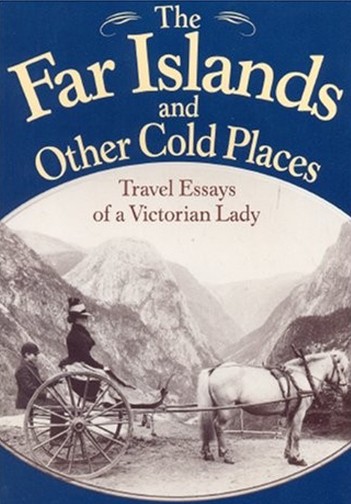
Elizabeth Taylor was an American artist, botanist, explorer, and journalist. Born in 1856 in Columbus, Ohio, Taylor led an extraordinary life. She was the fifth daughter of Chloe Sweeting Langford Taylor and James Wickes Taylor (nicknamed “Saskatchewan”), who served as United States Consul in Manitoba from 1870-1893. "Lizzie" was his favorite daughter and frequent traveling companion in exploring the upper reaches of Minnesota and Canada: "They had a great many things in common, those two, and foremost was an enduring love of the out-of-doors, of all aspects of nature" (Dunn 51).
She continued to travel all her life, and her visits to Alaska, Iceland, Norway, and the Faroe Islands were chronicled through sketches and narratives she published in Frank Leslie’s Popular Monthly, Atlantic Monthly, Forest and Stream, and other periodicals. Many of these essays were compiled and published by Taylor's great-nephew in 1997 in The Far Islands and Other Cold Places.
Between her lengthy expeditions in Scandinavia and North America, Taylor lived in Paris in the 1890s. There, she met Ernest Seton Thompson, wildlife artist, author, and one of the future founders of the Boy Scouts of America. He was in Paris studying at the Académie Julian and he taught Elizabeth all he knew about documenting the animal world before she set off on her 1892 trip to the Mackenzie River region in Canada:
Thomson came to her Paris room a number of times, drinking gallons of tea as he shared his knowledge of things scientific with 'he greatest thoughtfulness and kindness.' He taught her how to skin birds, take notes, and plan her outfit to the smallest detail. He had a special interest as next year he wanted to see the Mackenzie himself (cited in Vanast, "Shattered Wings," n.p).
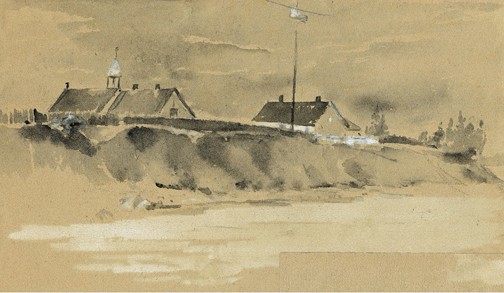
In the summer of 1892, she set off on a Hudson Bay Company steamer from the delta of the Mackenzie River in Canada’s Northwest Territory all the way up to the Arctic Circle, a perilous journey of some 1,500 miles. Though the purpose of her trip was to sketch and photograph the landscape on the Mackenzie, Taylor managed to collect "[...] 150 species of plants, perhaps 100 insects (not species), 14 birds, a few fish in spirit, a number of photos and hasty sketches, 150 pages of journal, a mouse skin, and a few small things in spirit, besides some wings" (cited in Vanast 2011, 213). But, unfortunately, her trip proved to be a disappointment, particularly because the Smithsonian's resident naturalist, Robert Ridgway, basically refuted her work and classified her collections as amateurish, instead touting her friend Ernest Seton Thomson as “one of the best animal artists we have now anywhere” (cited in Vanast 2011, 228).
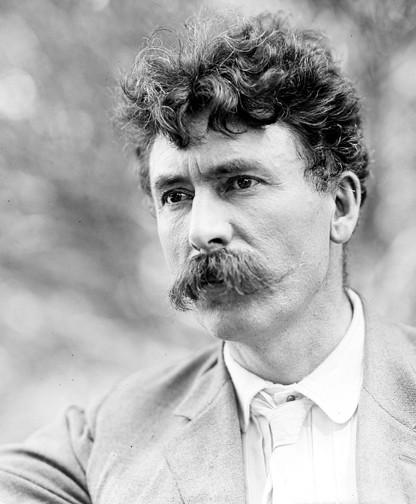
Thomson met her after her trip to Canada:
My Paris young man turned up as soon as I arrived, the dear creature. I was so glad to see him and we had as much to say that we didn’t know how to begin. I have never met a more satisfying young man for the subjects I am interested in just now. He is so practical, knows so much, considers me as a fellow boy, and is jolly and pleasant (cited in Vanast 2011, 213).
In a letter to her friend "Little Burr," she expresses her feelings about Thomson whom she had seen during a trip to Boston:
I surely must have told you about my brat boy, but probably you have forgotten him. He is now taking a special course in Harvard—has grown six feet and one inch high and is so delightful that I promptly handed over whatever fragments of my heart I had not already given him. Although very busy, he gave up a good deal of time to me, and we did have good times. He is unusually bright, is good and high minded and is going to be a big scientific man one of these days... (cited in Vanast 2011, 223).
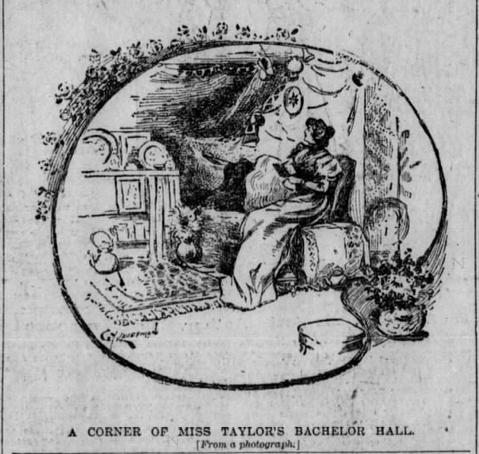
Taylor returned to Paris in February 1893 and pursued her artwork and travels, though funds were quite low and she struggled to make ends meet. She spent four months in remote regions of Norway, reporting on her encounters with reindeer to Dr. Sheldon Jackson, General Agent of Education in Alaska, who reprinted her letter in the Report on the Introduction of Domesticated Reindeer into Alaska (1894), an official government document. She described in vivid detail the Vidda, a plateau region in southwestern Norway, detailing its flora, fauna, and various specimens she had collected.
Among her finds were two new species of flowers and two new species of insects; her letter indicates that the British Museum produced a pamphlet on her insect discoveries. Taylor listed her address as the American Woman’s Club, number 4 rue de Chevreuse in her missive to Dr. Jackson (143). Caro Lloyd describes Taylor and her room at the Club in an 1894 article published in New Outlook: "One of the quietest is a passionate explorer, the only woman who has penetrated the lower Mackenzie. Her room is adorned with presents from the Eskimo, and a wonderful Norway fish-net" (60).
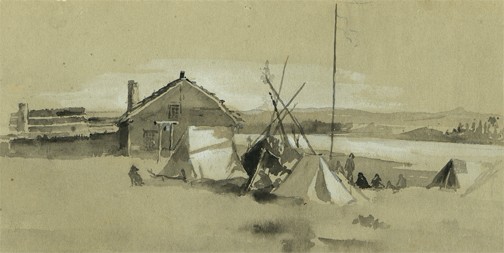
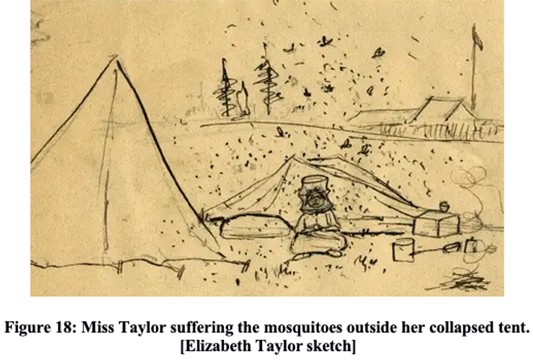
Elizabeth Taylor attended the very first exhibition opening at the American Girls’ Art Club and published a brief review in The Churchman on October 20, 1894. Her letters reveal that she was studying drawing at the Académie Delécluse and painting with Frank Edwin Scott (Vanast 2011, 6). Taylor was also a member of the American Woman's Art Association and exhibited her work several times at their annual shows at the Club. In 1894, she showed sketches of Norway, and was listed among the art students in the 1895 show who were commended by the reviewer for the New York Herald European edition (February 27, 1895, 5). She even served on the Exhibition Committee in 1895. Taylor was one of the few artists whose work was praised by the snobbish Storrs Lee in his scathing 1897 review of the AWAA exhibition for Quartier Latin. She exhibited several landscape and marine paintings depicting Iceland and the Faroe Islands but Lee singled out her “Whaling Station in North Iceland” as a “neat bit of composition” (167).
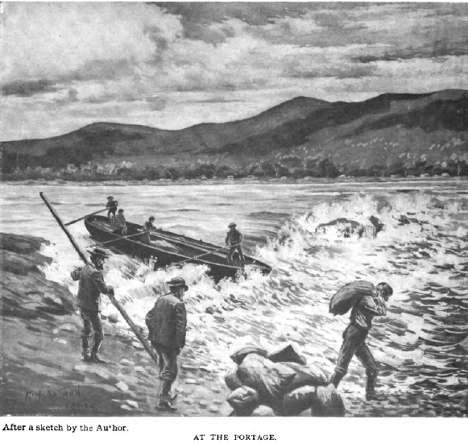
Despite her success, Taylor did not believe in her artistic abilities: "I have made less than snail-like progress, but I have improved, and though I shall never be a real artist, I can learn to teach and to a certain extent to illustrate – and to make, perhaps, a few saleable sketches" (cited in Vanast 2011, 233). Although she also struggled with writing, she hoped "[...] to express myself well enough for my small efforts to have a market value somewhere. It will be better to have little things accepted and printed in obscure papers or magazines at low prices than not at all" (cited in Vanast 2011, 230).
Writing did not come easy to Miss Taylor. One short article would take months of study and of concentrated and conscientious labor. It was impossible for her to do hack work, and the results achieved seldom failed to be outstanding (Dunn 52).
Nevertheless, she persisted, publishing a wide range of articles and illustrations which enabled readers in the English-speaking world to explore the vast reaches of the globe from the comforts of home.
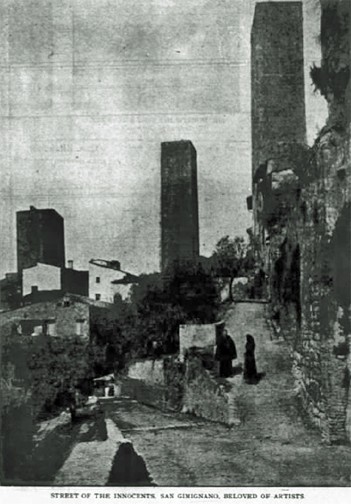
One of Taylor’s most fascinating articles, published in the Illustrated Buffalo Express on September 25, 1898, chronicled a summer of sketching with other American artists in San Gimignano, Italy (5). She joined Roland Rood’s sketching class on their journey to the “City of Beautiful Towers,” experiencing the winding streets and medieval skyscrapers “that Dante saw when he came as ambassador from Florence.” Taylor described how cheaply one could live with an Italian family, which patron saints were venerated in the city, and the long lunches followed by even longer naps she and her classmates enjoyed during the heat of the Italian summer.
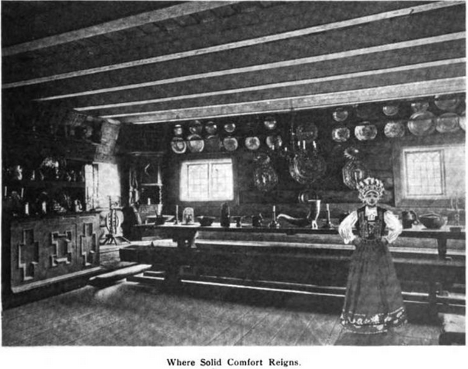
Taylor’s writing always covered a wide variety of subjects: “Mythological Relics in Iceland;” “A Woman in the Mackenzie Delta;” “The Valley of the Others” about Dalen, Norway; and “The Great Thirsty Dance” about the rituals of indigenous Canadians. On many of her expeditions, she was the only woman in the company of male guides and, often, she was the first English-speaking woman to venture to such distant locales in harsh climates.
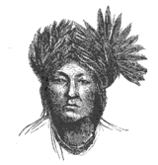
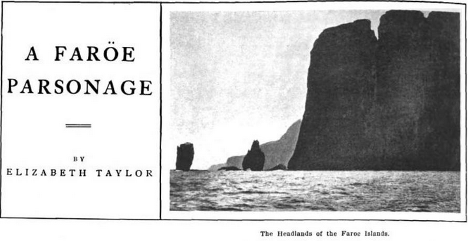
The most frequent subject in her dispatches was the Faroe Islands, a stunning archipelago located in the North Atlantic between Iceland and Norway, though today part of the kingdom of Denmark. Taylor first visited the Faroe Islands in 1895, staying for 10 weeks. She returned in 1900 and remained in this remote place for five years, and then came back again in early 1914. She was marooned in the islands for the duration of WWI (Sjoholm 160). Ever the journalist, Taylor published her wartime experiences for The Atlantic in 1921, sharing diary entries from “Five Years in a Faroe Attic.” She even recalls when a steamer entered Eide harbor in December 1918 for the first time in nearly three years. Despite her eagerness, she couldn’t board the ship because they were “quarantined against the Spanish influenza and no one is allowed on deck” (451).
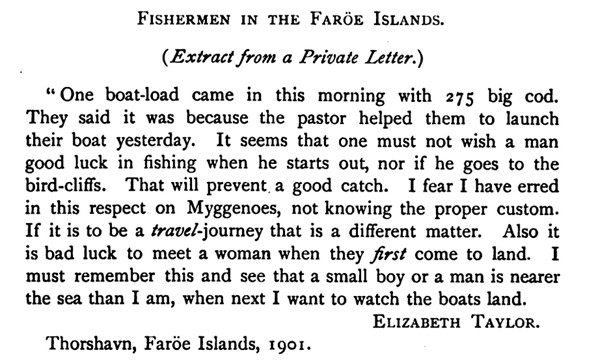
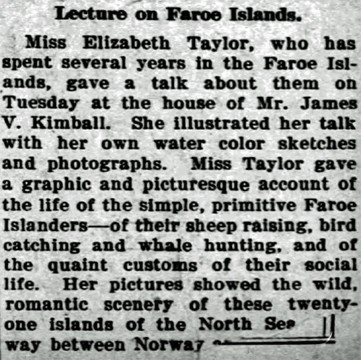
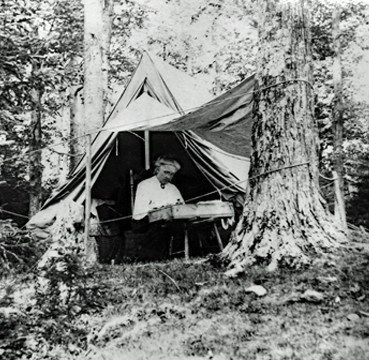
Like so many women artists and adventurers, Taylor never married, ensuring her freedom to travel and earn a living as a writer. She formed a platonic bond during her war years in Eide with a Faroese landscape painter, Niels Kruse, whose style she possibly influenced while sheltering with his family.
In addition to her expeditions, art studies, and journalistic contributions, Taylor often lectured to captive audiences in the United States about her travels. She received a warm welcome in Bennington, Vermont in October 1911: “Many of Miss Taylor’s own sketches and paintings of scenes in the islands were exhibited and added to the charm and interest of her talk. She also showed some of the quaint articles of dress worn by the peasants” (Bennington Evening Banner, October 30, 1911, 1).
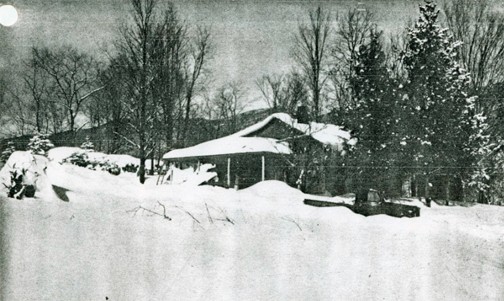
In July 1919, Taylor left the Faroe Islands and returned to the United States permanently, ultimately choosing Vermont, where she had lectured and spent summers writing and painting, as her final resting place. After thirty years of travel with no real home, she retired in 1923 to a two-room cabin which she had built on a wooded hilltop on the land of Wake Robin Farm, owned by her friend Blanche Dunham Hubbard. She lived there for seven years in the company of her cat Belinda, seldom leaving the area and concentrating on her writing.
My little cabin is so small and so wind swept from all directions that it cannot be called warm; (it) has no plaster, no protected cellar, just a few stones as foundation. A person accustomed to a furnace or steam heated houses & wearing ordinary clothing would think it unbearable (cited in Dunn 53).
Elizabeth Taylor died on March 8, 1932 of natural causes at the age of 76. Though she was somewhat dismissively called “Miss Taylor” or “an American lady” in the press (Holm 33), she was always credited for her botanical discoveries. Intrepid until the end of her life, Elizabeth Taylor was a “born traveler […] a trained observer, a naturalist and a graceful writer” (Forest and Stream, 1900, 261).
Sources
- “American Art Students Exhibition.” The New York Herald European edition, February 27, 1895, p. 5. Gallica.
- Dunn, James Taylor. "North Hollow Haven." Vermont Life, vol. 4, no. 3, Spring 1950, pp. 50-51. Internet Archive.
- “The Faroe Islands: Delightful Talk by Miss Taylor at Fortnightly Saturday.” The Bennington Evening Banner, October 30, 1911, p. 1. Library of Congress Chronicling America.
- Holm, Theodor. “Contributions to the flora of Iceland.” Botanisk Tidsskrift, vol. 21, 1897-1898, p. 33. Google Books.
- “Lecture on Faroe Islands.” Montclair Times, April 16, 1910, p. 5. Newspapers.com.
- Lee, Storrs, "The Sketch Exhibition of the American Girls' Club." Quartier Latin, vol. 2, January 1897, p. 167. Google Books.
- Lloyd, Caro. "The Club for American Girls Studying in Paris." New Outlook, vol. 50, no. 2, July 14, 1894, pp. 60-61. Google Books.
- Macoun, John. “Mackenzie River Notes.” The Ottawa Naturalist, vol. 6, 1892-1893, pp. 117-118. HathiTrust.
- “News from a Far-Off Land.” Forest and Stream, vol. 55, no. 14, October 6, 1900, p. 261. Biodiversity Heritage Library.
- Sjoholm, Barbara. The Pirate Queen: In Search of Grace O'Malley and Other Legendary Women of the Sea. Seattle, Washington: Seal Press, 1999.
- Taylor, Elizabeth. “The American Girls’ Club in Paris.” The Churchman, vol. 70, October 20, 1894, p. 489. Google Books.
- Taylor, Elizabeth. “The City of Beautiful Towers.” Illustrated Buffalo News, September 25, 1898, p. 5. Newspapers.com.
- Taylor, Elizabeth. “An Eider Duck Farm.” Galesburg Enterprise, December 17, 1897, p. 6. Newspapers.com.
- Taylor, Elizabeth. “A Faroe Parsonage.” The Churchman, vol. 86, November 1, 1902, pp. 544-545. Google Books.
- Taylor, Elizabeth. The Far Islands and Other Cold Places: Travel Essays of a Victorian Lady. Ed. James Taylor Dunn. St. Paul Minnesota: Pogo Press, 1997.
- Taylor, Elizabeth. “Fishermen in the Faroe Islands.” Folk-lore, vol. 14, no. 3, 1903, p. 306. Google Books.
- Taylor, Elizabeth. “Five Years in a Faroe Attic.” The Atlantic, volume 128, 1921, pp. 441-451.
- Taylor, Elizabeth. “The Great Thirsty Dance.” Frank Leslie’s Popular Monthly, volu. 22, July to December 1886, pp. 681-683. Google Books.
- Taylor, Elizabeth. “Memoranda of Reindeer in Norway.” Report on Introduction of Domesticated Reindeer into Alaska with Maps and Illustrations. Sheldon Jackson, D.D. Washington: Government Printing Office, 1894, pp.141-143. Google Books.
- Taylor, Elizabeth. “Mythological Relics in Iceland.” Popular Science, volume 32, April 1898, p. 83. Google Books.
- Taylor, Elizabeth. “Over Hardanger Vidda: The Upland Summer Pastures of Norway.” Outing, volume 36, April-September 1900, pp. 664-670. HathiTrust.
- Taylor, Elizabeth. “The Valley of the Others.” The Atlantic Monthly, vol. 110, July-December 1912, pp. 825-832.
- Taylor, Elizabeth. “A Woman in the Mackenzie Delta: Part I.” Outing, vol. 25, October 1894-March 1895, pp. 44-55. HathiTrust.
- Vanast, Walter, ed. "Bird in the Bush: American artist Elizabeth Taylor’s summer journey to the Mackenzie and Western Arctic, 1892. Letters, Journals, Photos, and Sketches," draft 16. Historical Society Archives. McGill University, 2011.
- Vanast, Walter, ed. "Shattered Wings: American amateur naturalist Elizabeth Taylor’s 1892 bird-body preserving lessons from Ernest Seton Thompson in Paris, failure of her Mackenzie River collecting months later, and subsequent fruitless push for publication and praise," draft 9. Historical Society Archives. McGill University, n.d.